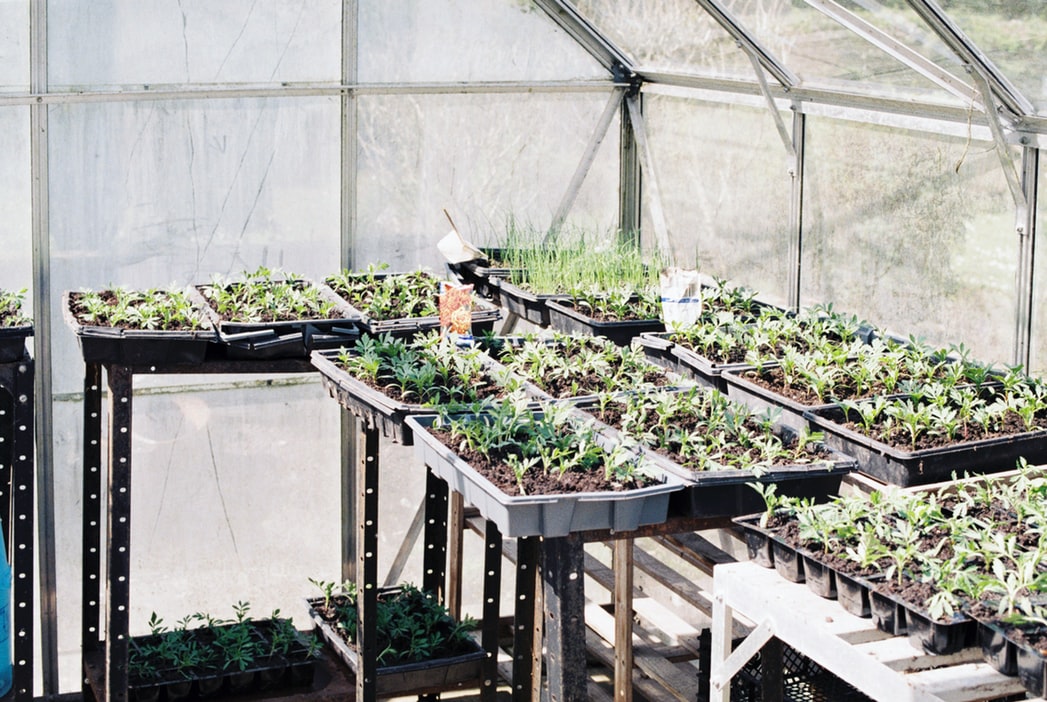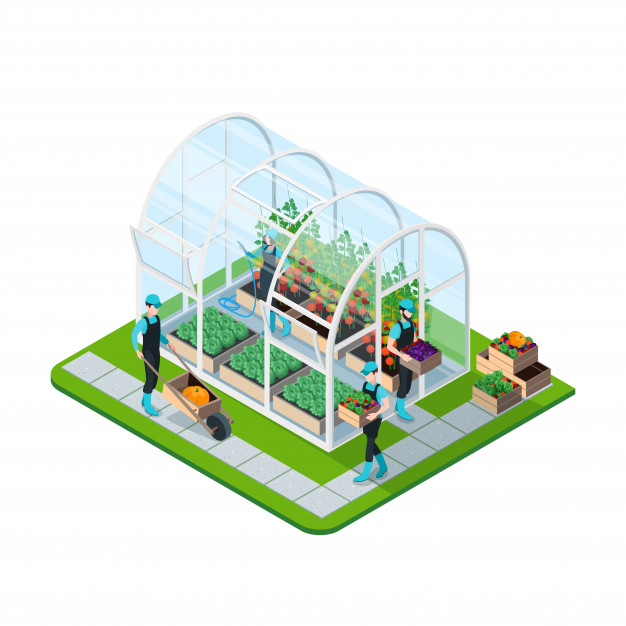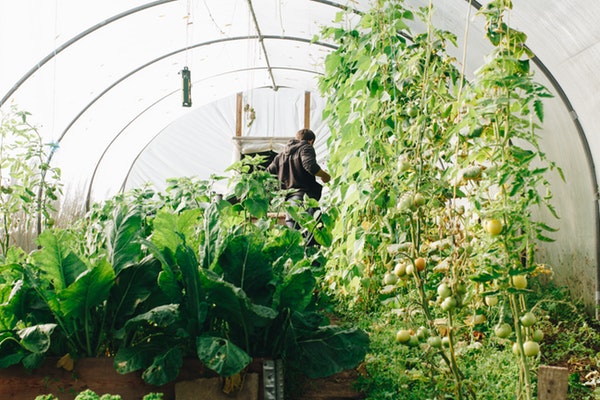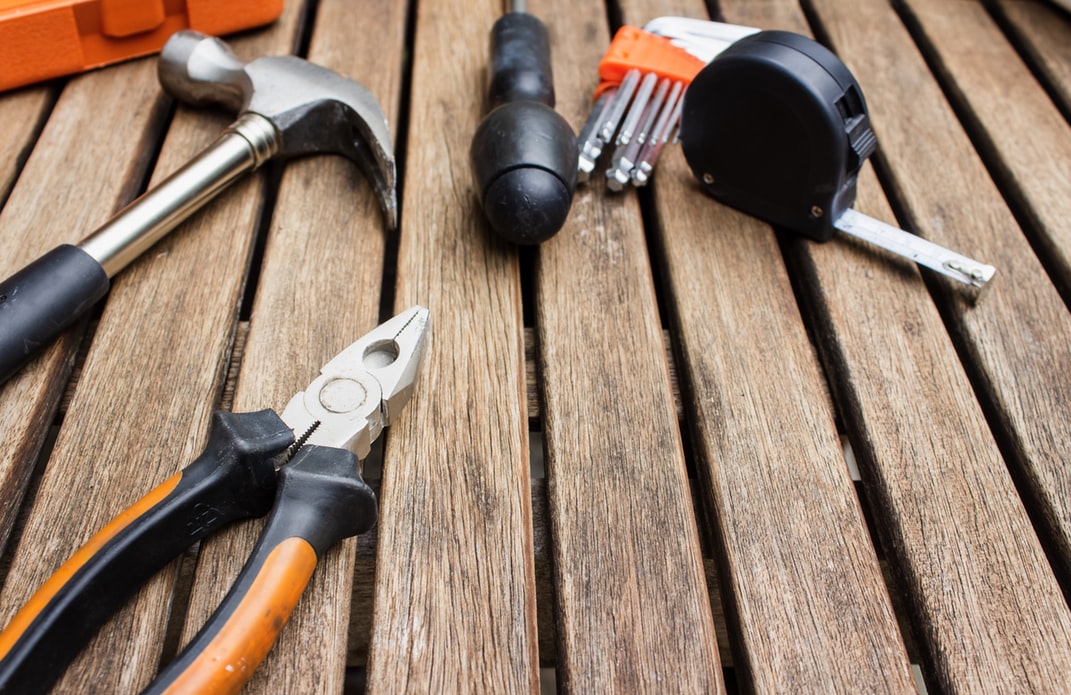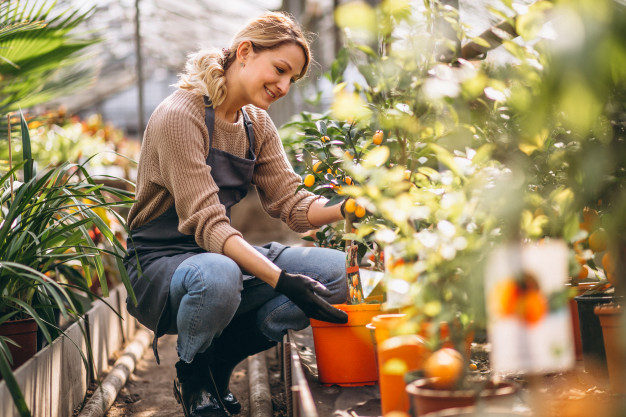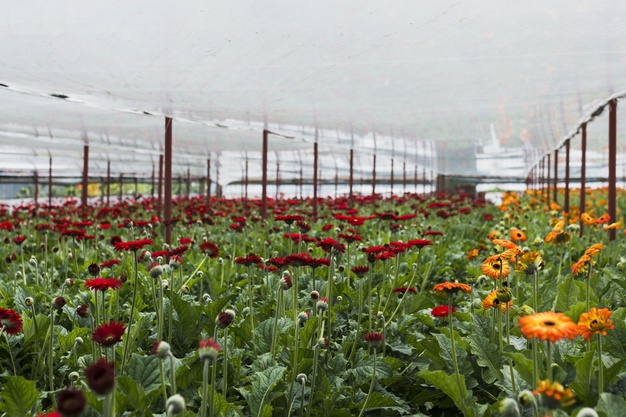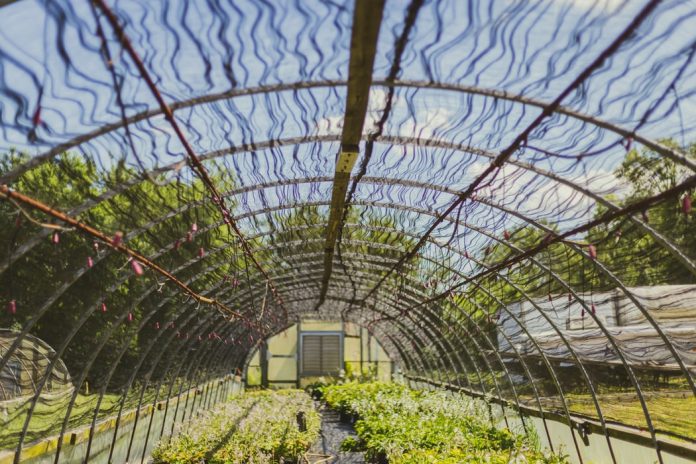
Hoop greenhouses are one of the most cost-effective ways for beginners and pros alike to construct a greenhouse. When built properly, this tool can transform your soil into a much more potent base for new plants.
To beginners, a hoop house may seem like a large investment of both time and money. Thankfully, that’s not quite the case. Hoop houses are one of the easiest and cheapest types of greenhouses you can build. Because they take so few materials, it’s even possible for you to build a hoop house completely on your own!
This guide discusses all of the information you need to know to build a successful hoop greenhouse. First, we’ll talk about the basic components of a hoop house. Then, we’ll mention some of the advantages of constructing a hoop house. Finally, we’ll explain how to build your very own version. Read ahead to find out everything you need to know!
What Is a Hoop House?
Image source: Unsplash
Though it might look like any other greenhouse to the untrained eye, a hoop house is its own type of greenhouse structure. In their most basic form, hoop houses utilize PVC pipe and plastic sheeting to shield plants.
Farmers usually construct hoop houses with a wooden frame on the ground. The solid wood adds stability and keeps the PVC grounded even as it arches above your plants. As long as you have a solid foundation, the rest of the hoop house is up to you — depending on their preferences and the materials available, gardeners usually build their hoop house to suit their specific needs.
Gardeners and farmers construct hoop houses to protect their plants from snow and frost. When built properly, a hoop house will also insulate the heat and can protect plants from wind or rain. As we’ll discuss in the next section, hoop houses offer a wide variety of improvements for your crops without a lot of time or investment on your part.
What Are the Benefits of a Hoop House?
Hoop houses provide a multitude of benefits. Whether you’re a professional farmer or like to garden as a hobby, it’s easy to improve the quantity and quality of your plants with a hoop house.
First off, the warmer temperatures make a hoop house comfortable and help your plants grow more quickly. Because a hoop house insulates heat, it’s often more humid inside as well. This heat can be a good thing or bad thing, depending on your goals. More often than not, though, the humidity boost is conducive to plant growth.
Beyond just increasing the speed at which your plants grow, hoop houses can also stimulate them to grow larger. Without cold or frost, and free from nagging pests, plants can grow taller and wider. Not only will a hoop house expand your harvest to all seasons of the year, but it can also improve the size and quality of your crops when you do harvest them.
If you like to grow a lot of delicate plants, you should consider building a hoop house around them for added protection against the elements. If left unchecked, you may lose a large portion of your harvest to wind, snow, and rain. A hoop house can protect against all of these afflictions.
Because it’s so easy to construct, users often build a hoop house as an added precaution to keep all of their crops away from harsh weather cycles.
Image via Freepik
Sturdy hoop houses can protect your crops against birds and other pests that attack the plants as they grow. The surface covering and PVC hoops offer an extra layer of shielding between your crops and bugs, pests, and other animals. In this regard, a hoop house is more permanent and more effective than alternative techniques like draping netting over anything you grow.
Because many diseases are borne through moisture and rainfall, insulating your plants from the rain in a hoop house can make them healthier and protect them from infirmities. You’ll still need to be vigilant about other ailments, of course! However, installing a hoop house in your garden can be a great first layer of protection.
Image via Pexels
In some circumstances, a well-built hoop house may even open up different farming possibilities for you. Plants and crops that ordinarily might not grow in your location will grow in the hotter, more humid environment of a hoop house. Likewise, plants that struggle to defend against pests or birds outside of the hoop house may flourish with the extra protection.
Hoop houses are far easier to construct and are more cost-effective for smaller patches of land. While greenhouses are costly and take up a lot of space, you can build a hoop house on your own for dirt-cheap prices.
How to Build a Hoop Greenhouse
If you’re building a new hoop house, you may be confused about where to start and how to assemble the structure. Thankfully, we have some advice to help you as you build. Follow these tips for a smooth and easy construction process.
Necessary Materials
Image source: Unsplash
Before you can begin building, you’ll need to have all of the proper materials on hand. These items are some of the critical elements any hoop house will require. You may need to buy more or less of each item depending on the size and shape of your hoop house. However, these are the materials you should keep in mind as you begin the construction process.
The first, and possibly most important, component of any hoop house is lumber. You’ll use this for the frame, so it’s important to get durable, high-quality pieces of wood! Dirt-cheap or flimsy pieces may crack, break, or disintegrate over time.
If left unattended, these problems could bring down your hoop house entirely. Take an extra few minutes to evaluate your options before you purchase; it will save you time and hassle on the back end.
You should also look for rot-resistant wood before you buy. Because you fix this wood in the soil, it’s more susceptible to bugs and rot than other applications. Purchasing wood with some extra rot resistance will lengthen the lifespan of your hoop house and lower your maintenance costs over that time.
Though the exact size will depend on the area, you want to enclose; many gardeners build their hoop houses using 2×4 planks or larger 4×6 pieces. Standing the pieces on their narrow side creates a raised soil bed and can keep ground-level critters away from your crops.
Image via Freepik
Once you’ve got the necessary wood, you’ll need to find PVC pipe. As long as the pipes are long enough to curve and stretch across the length of your hoop house, the exact size and shape are up to you. However, if you want a tall hoop house that you can walk through, you should buy longer pipes. When curved, these will rise taller and give you extra space underneath.
Make sure to purchase enough pipes to support the next item: greenhouse plastic sheeting. While it may be tempting to purchase cheaper lengths of plastic from any old store here, make sure that you buy high-quality materials now. They’ll offer UV protection to keep your crops growing well, and they’ll outlast the budget options over the long run.
Constructing your Hoop House
Image source: Freepik
To build your hoop house, start by driving the wooden foundation into the ground. Attach the planks with wood nails at the corners and make sure that the frame holds steady. After all, you’ll need this to support the rest of your structure.
For smaller hoop houses, you may be able to mount brackets along the side of each wood plank and curve your PVC pipes through those. If you use this method, make sure to attach the pipes to the ground with a bit of rebar at the tips. The rebar will keep your hoop house stable in all conditions.
Larger hoop houses will require you to drive ground pipes around the base. These are longer PVC pipes that you drive into the ground vertically to support the hoops. Do this at every corner of the house and every couple of feet for the length of the planks. While it may take more work now, it will lead to a stronger structure in the end!
Once you have the hoops up, you can drape the plastic sheeting over the PVC. Align the plastic where you want it, then secure it. You can attach it to pieces of wood along the base, or use wire to secure it around the hoops. For added security and protection, you could also use a double layer of plastic sheeting. “Inflating” the sheets, or blowing air between them, is another common strategy.
Summary
Image source: Unsplash
Those are all the steps you need to assemble your very own hoop house. Though it may seem like a daunting task at first, in reality, the process is simple and painless. Install a hoop house in your garden today to take advantage of all of its benefits!
Featured Image: Unsplash

